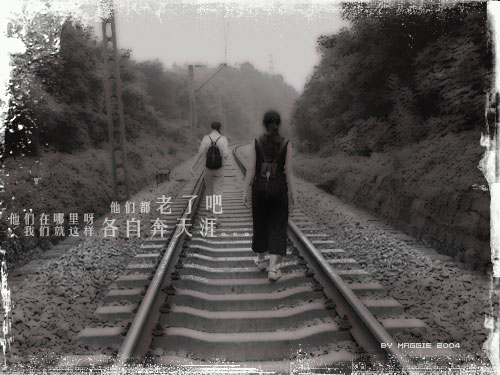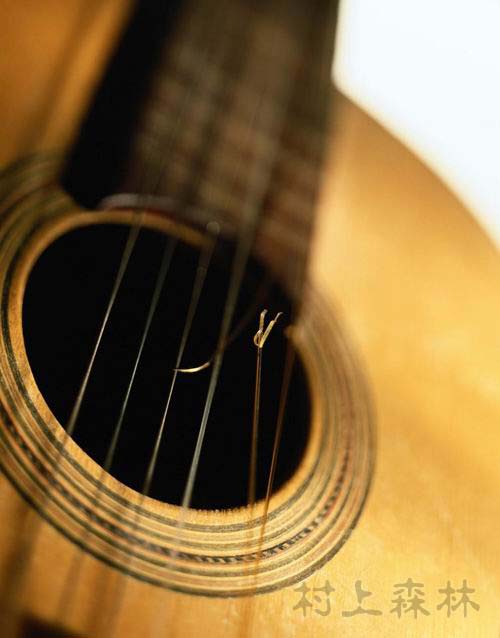Rainy Weather, Hot Weather
From Karie to Stavronikta
From Karie to Stavronikta
by Haruki Murakami
Translated by Christopher Allison
Athos is a land of abundant greenery. This was a refreshing sight to
my eyes, accustomed as they were to the scant trees and rocky soil
of the Greek (especially southern Greek) summer. Excluding the stark
cliffs that rim the coastline, everywhere you look there is nothing
but lush forest and grassland.
Belching smoke all the way up the steep mountain trail, the bus
brought us to the town of Karie, the capitol, which lies on the far
side of a high ridge. Although it is the capitol city, Karie is as
quiet a town as could possibly be. Even calling it a town might be
stretching it. It's really just a peaceful little hamlet. In the
area around the bus stop, there are only a few ancient stone
structures standing in a row. There's a church, a bell tower, and a
couple of shops. There are some dogs and cats here, too. And a few
scattered people. Having set down their bags and packages, a few
monks were lounging in the sun. One old monk approached when he saw
me and asked where I was from. When I said I was from Japan, he
asked whether I was Orthodox. No, I'm not, I replied, so he asked
what my faith was. Lacking an alternative, I said I was Buddhist. If
I had said that I didn't have one, I would have been kicked out of
town. "Are there Orthodox churches in Japan?" he asked. When I
replied that there were (St. Nicholai Church in Kanda is Orthodox),
he flashed a satisfied smile at me. Even a country like Japan is not
beyond salvation, I guess.
I must have had this same conversation more than ten times during my
trip through Athos. It was always repeated in exactly the same order
without a single word different. Where are you from? Are You
Orthodox? Are there Orthodox churches in Japan. After all, their
faith is the center of their world, the center of their existence,
the center of their sphere of thought. It is the real world to them.
Their concentration begins there and ends there. They are completely
different people from us.
We received our documentation at the headquarters office in Karie.
Athos is sub-divided into 20 individual parishes, corresponding to
the 20 monasteries, which preserve their independence within the
greater autonomy of the whole region, with the exception of Karie,
which is a so-called 壮pecial district.?Each monastery selects
representatives to come here and gather together in the 舛hurch
Council?which decides issues facing the whole peninsula. This system
has survived almost unchanged since the time the monasteries were
founded. The principle is very democratic.
We received safety permits here. Finally we were ready to set out on
our trip around the monasteries. Because we've been getting further
and further behind schedule throughout the day, by this point it was
already 3:00. We probably wouldn't be able to get too far. We had to
decide right away where we were going to stop for the night. All of
the monasteries close their gates simultaneously at sunset, and once
the gates are closed they absolutely do not open again until the
next morning. It was thus decided more than a thousand years ago. No
matter how hard you pound, they won't let you in. If we didn't make
it to one of the monasteries by sunset, we would have no choice but
to rough it. Apart from the monasteries, there are no other places
to stay in the region.
Since it was still summer, sleeping outside wouldn't necessarily be
that bad. Although we didn't have a lot of food, we were well enough
provisioned to fend off starvation until morning. The problem was
the wildlife. There are wolves in Athos. And while there aren't very
many of them, we had been warned about them at the outset. They said
that the wolves came out at night. I was willing to believe that a
place like this, that had been preserved more or less untouched in
its natural state, would be the kind of place where wolves lurk, and
was not thus overly keen about sleeping outside in it. So we had to
look at the map in order to determine distances and times required
to cover them.
It was decided for the time being to head for the monastery at
Stavronikta. The road there would take about two hours. Once we had
made it there, we would continue on to the Iviron monastery. We
decided that, given it was our first day and the hour was late, we
would let our circumstances of the moment shape our plans.
We hitched our packs up on our backs and started down the road to
Stavronikta. The three o'clock sun was strong, and sweat dripped
from our bodies, but the road itself was pleasant. It was enough to
make you want to hum a little tune as you walked along. To tell the
truth, there was actually a bus that ran from Karie to Stavronikta.
But we had decided to walk it anyway. We had come here for the
purpose of struggling through the whole distance ourselves. Walking.
It was a nice mountain road. A wide variety of birds could be heard
singing in the forest, and once in a while they would shoot up and
dart across the sky. There were small shrines with crucifixes on top
scattered here and there along the road. There were also billboards
that read "There is peace in the forest and God is smiling. Please
prevent forest fires." That's exactly the way it was.
We met a tall, thin Greek boy walking along the same road as we
were. He was on his way to a retreat center where he would help in
the production of a tapestry. Throughout Athos, there are a number
of these retreats, set apart from the monasteries, where a small
number of monks produce sacred art objects. The lad was not himself
a monk, but occasionally he visited this particular center and took
part in the work there.
At length we arrived at the Stavronikta monastery. Of all the
monasteries in Athos, this one is the smallest. Upon entering the
monastery, there is an ancient stone aqueduct on the left. A row of
ponds abuts up against it. There is also a tall, sturdy-looking
tower. Since Stavronikta Monastery is close to the coast, long ago
it was under constant attack by pirates, and its defenses are
appropriately severe. From the direction of the sea, it more nearly
resembles a fortress than a monastery.
When we arrived at the monastery, we first met with the head monk,
who offered us Greek coffee, Ouzo mixed with water, and this sweet
jelly candy called rukumi. We were offered this candy without fail
at all the monasteries we visited, and it was sweet enough to loosen
you teeth and stiffen your jaw. Since it was, of course, hand made,
the flavor was slightly different at each monastery, the only
constant being the unbearable sweetness.
Ouzo is a domestic Greek liquor, the alcohol content of which is
quite high. It gives off a pretty overwhelming stink, and turns
milky-white when mixed with water. And it's very cheap. It's not
really the kind of thing that sits well on the Japanese palate, and
it certainly isn't my favorite thing in the world to drink, but it
does relax a tired body as soon as it hits the stomach. The coffee
is served with ample sugar and is also extremely sweet. We came to
call this the Athos Three Point Set, the purpose of which was to
dispel a traveler's weariness with doses of alcohol and sugar. At
any rate, whenever we were fatigued they tasted great. I'm always
grateful for alcohol and coffee, but at first the sweetness of
rukumi was too much for me and I couldn't eat it. I took a nibble
and then left the rest.
Later, as the road became more difficult, and my body grew more and
more fatigued, I've find myself wanting to eat rukumi as soon as we
would arrive at the next monastery. But I'm getting ahead of myself
again.

